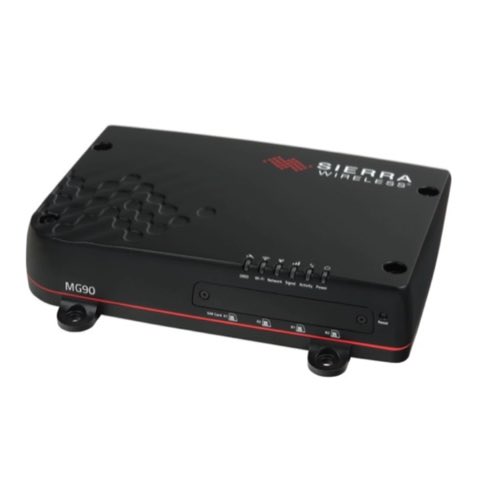MG90 Routers

Semtech MG90 routers are high-performance devices that enable connectivity among an array of network types. They exist to ensure reliable communication in the sorts of mission-critical applications where miscommunication can endanger lives or integral business operations. They are designed for applications in public safety, field services, and fleet management. These routers come with multiple advanced features that allow them to be applied in a variety of circumstances. The MG90 series uses dual cellular radios and satellite communications to ensure seamless integration among a wide variety of connected devices.
These routers perform excellently in the remote monitoring and real-time mass configuration of devices that is necessary for enhancing the efficiency and reliability of dynamic operations. They are well suited for land mobile radio and auxiliary devices, which means they are a high-performance solution for EMS systems and other mobile radio applications. Their features include DC power cable compatibility and advanced awareness systems.
FAQs
Can Semtech's MG90 routers provide secure connected mobile assets access to satellite systems thereby maximizing system expandability to fleet operations and high performance EMS systems?
Yes, Semtech's MG90 routers provide secure connected mobile asset access to satellite systems, thereby maximizing system expandability for fleet operations and high-performance EMS systems.
Basics of Switches, Routers & Hubs
Ethernet hubs, switches and routers connect computers to networks, devices and other computers.
Ethernet hubs are the least intelligent of the three devices. They simply take any message that is received and transmits it to every other device connected to that hub. For example, if CPU 1 on a network wants to send a message to CPU 5, it will send that message through the hub.The hub will then take that message and send it out to every connected device on that hub regardless of the intended target. When CPU 5 receives that message and wants to respond, it will send its response through the hub which sends it to every connected device. Ethernet hubs do not manage any data that is sent and tend to bog down networks. They also do not offer much security for the network. For these reasons, Ethernet hubs are are being replaced with network switches.
Switches transmit data from one device to another on the same network. Unlike a hub, switches use a switch table to learn where data came from and where to send it. Switch tables store Mac addresses and device ports. By storing this data, a switch can operate more efficiently than a hub, greatly reducing the traffic within the network.
Routers transfer data between devices while learning the location of those devices within the network. They are also a junction between two or more networks. An example of this would be a home router where the home network is connected to the Internet. Another example would be when the router connects two or more networks with different business functions. In addition to connecting two or more networks, a router offers important security features that help protect the network.

